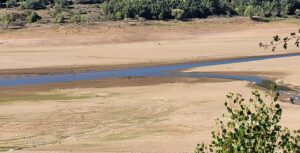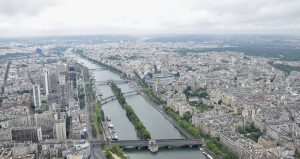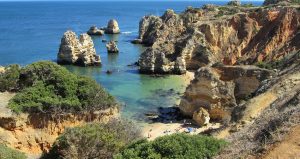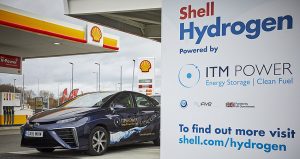Desalination is emerging in Belgium and the Netherlands
-
 Esther Rasenberg
Esther Rasenberg
Share article:
Until recently desalination of seawater was mainly used in Southern Europe. But due to climate change desalination of brackish and seawater is on the rise in Northern countries like the Netherlands and Belgium. Forced by extreme drought industry, agriculture and drinking water companies are turning to alternative freshwater sources.
Dutch Water Board Scheldestromen, Chemical Company Dow and drinking water company Evides are working on a pilot study in the province of Zeeland. In this study wetlands are used for mild desalination of brackish wastewater streams. “We are investigating whether artificial reed beds can be used to purify water before treatment with desalination technologies, such as ion exchange, nanofiltration, reverse osmosis and electrodialysis.”
Industrial water
Dow and Evides are investing in desalination technology. After 2024 brackish effluent from communal and industrial Waste Water Treatment Plants (WWTP’s) will be desalinated and treated into high-quality process water”, are telling Hans Cappon and Niels Groot who are both working for HZ University of Applied Sciences in Middelburg. Niels Groot also works as a water specialist at Dow Benelux BV.
Scarcity in Zeeland
Cappon explains that desalination of brackish water only makes sense if freshwater is scarce and there is an abundance of brackish water. “The availability of fresh water is decreasing rapidly in Zeeland. Brackish water as a source becomes valuable when agriculture starts losing crops on a large scale or when scarce freshwater is needed to produce drinking water.”
Flanders
Desalination is also becoming increasingly popular in Flanders in Belgium. Due to the extreme drought in recent years, agriculture has suffered great losses and drinking water shortages are imminent. According to OECD figures, within Europe only the Czech Republic and Italy have less water per person available. Flanders has limited freshwater because there are no supplies from rivers coming in.
Drinking water production
This spring a desalination plant started producing drinking water in Ostend at the Belgian coast. Every day up to 12 million litres (12,000 m³) of drinking water is made from brackish water from the Ostend-Bruges canal. Bruno Pessendorffer of the Belgian water company FARYS states: “We produce drinking water using multiple techniques. This varies from mechanical sieving, membrane filtering, reverse osmosis and the use of activated carbon. After the treatment process demineralized water is mineralized into drinking water. And before entering the distribution network the drinking water is treated with an additional ultraviolet treatment. ”
Upscaling
The Belgian desalination plant was designed in-house by FARYS. Veolia acted as main contractor during the construction. The company is now investigating whether more of the same installations can be used to combat water shortages. According to Pessendorffer the use of the desalination plant in Flanders had no consequences for the price of drinking water. In general desalination of seawater is expensive because of the large amount of energy required for reverse osmosis. Chemical company Dow considers desalination of seawater as a last resort for the production of process water.
Pilot
In the desalination market alternative and cheaper technologies are needed. In January two Dutch companies (REDstack and Pure Water Group) started testing an installation for desalinating seawater based on Electrodialysis Reversal (EDR) on a dike (Afsluitdijk) in the Netherlands. With this technology it is possible to separate salt water into fresh water and brine. “The pilot started after successful tests in a laboratory set-up. The installation has to produce about 25 m3 of fresh water per day and it seems to succeed, ” tells Rik Siebers of REDstack.
Electrodialysis as standard
REDstack is part of the international REvivED water consortium that carries out European water research. The consortium consists of ten partners from six different European countries and is coordinated by Fujifilm Manufacturing Europe. The goal is to make electrodialysis (ED) the new standard for seawater desalination. If the consortium succeeds competitive drinking water can be produced with significantly lower energy consumption compared to the latest reverse osmosis (RO) technology.
















